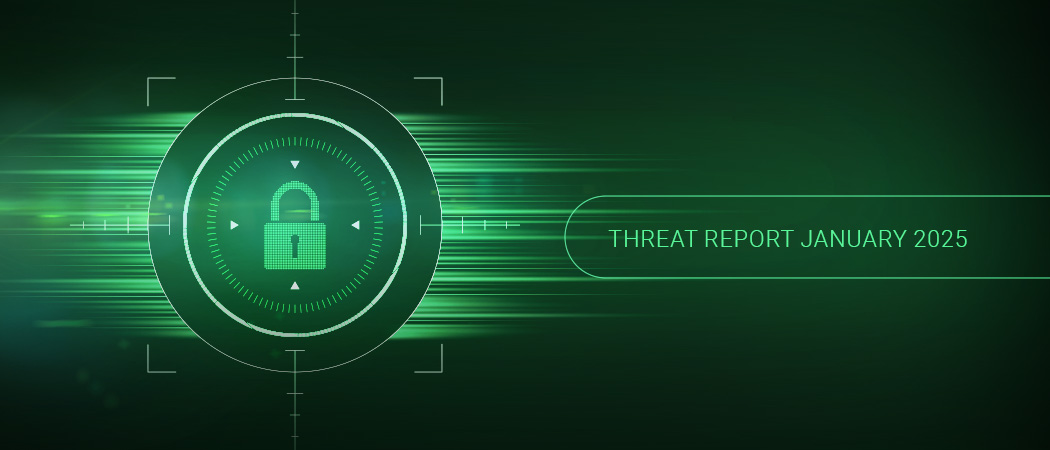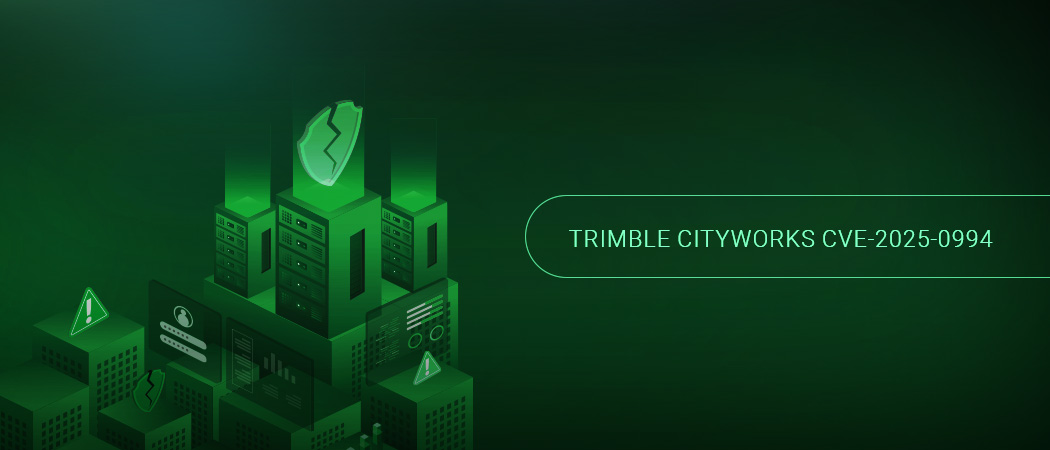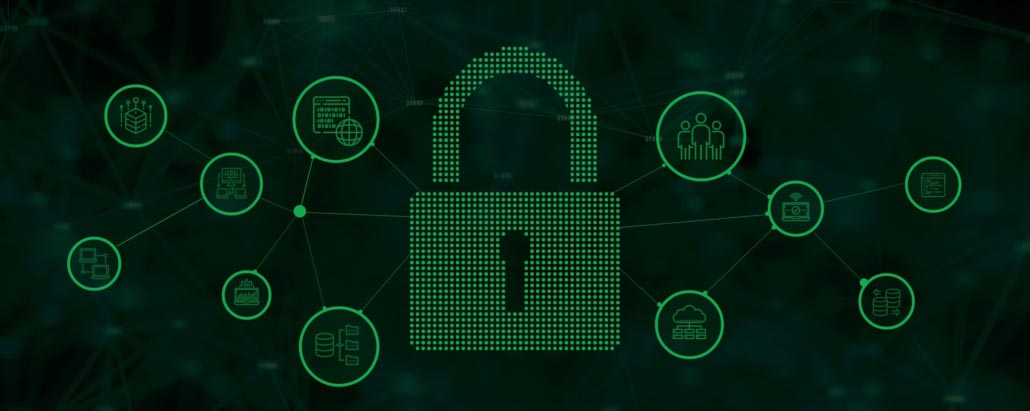This year, many large organizations around the world will be forced to reckon with the root-cause of cyber intrusions. Many known vulnerabilities are an open gateway to restricted network resources. Our first Threat Report of 2025 reviews some disastrous breaches from 2024 and then dives into some pressing cybersecurity vulnerabilities from this past month.

However, to be clear, the vulnerabilities discussed here merely scratch the surface. In January 2025, over 4,000 new CVEs (Common Vulnerabilities and Exposures) were published; 22 with the maximum CVSS score of 10, and 375 rated critical severity. The deluge of critical severity flaws in edge networking devices has not abated. Newly attacked flaws in products from global tech giants like Microsoft, Apple, Cisco, Fortinet, Palo Alto Networks, Ivanti, Oracle and others have been appended to CISA’s (Cybersecurity and Infrastructure Security Agency) Known Exploited Vulnerabilities (KEV) catalog.
Software Supply Chain: the User’s Responsibility
We are all running software we didn’t design ourselves. This places a huge emphasis on trust. Where trust is uncertain – whether due to fears of poor diligence, malice or human error – cybersecurity responsibility still rests on the end-user. Risk assurances depend heavily on technical knowledge and collective effort. Defenders need to remember these facts in 2025.
When supply chain security fails, ask why! Did the software vendor provide the required tools to take control of your own security outcomes? Is your IT security team executing diligent vulnerability discovery and remediation? Are your resources segmented with strong access controls? Have employees been trained to identify phishing attacks? Are other reasonable cybersecurity measures in place? Organizations need to mature their ransomware-readiness, implement regular vulnerability assessments and prioritized patch management. And they should verify reliable backup strategies can meet recovery targets and prioritize other fundamental security controls to protect sensitive data and prevent downtime.
Fortune Favors the Prepared
Assessing 2024, the UK’s NCSC (National Cyber Security Center) annual review painted a grim picture; significant cyberattacks had increased three times compared to 2023. For a birds-eye view, CSIS (The Center for International Strategic & International Studies) has posted an extensive list of the most significant cyber incidents of 2024. The landscape has been shaped by the Russia Ukraine conflict and an accelerated shift from globalization to adversarialism.
Check Point Research found that 96% of all vulnerabilities exploited in 2024 were over a year old. These are positive findings for proactive defenders. Entities conducting vulnerability management will fare much better against targeted ransomware and mass exploitation attacks. One thing is clear: proactive cybersecurity reduces the cost of a breach.
Let’s review two of the most significant breaches from 2024:
- The Change Healthcare Breach: Overall in 2024, breaches of healthcare entities were down from 2023’s record setting year. However, the ransomware attack against Change Healthcare set a new record for the number of affected individuals at 190 million, with total costs so far reaching 2,457 billion Dollar. The State of Nebraska has now filed a lawsuit against Change Healthcare for operating outdated IT systems that failed to meet enterprise security standards. According to IBM, breaches in the healthcare industry are the most costly, averaging 9.77 million Dollar in 2024.
- Typhoon Teams Breach 9 US Telecoms: The “Typhoon” suffix is used by Microsoft’s threat actor naming convention for groups with Chinese origins. The Chinese state-sponsored adversary known as Salt Typhoon infiltrated the networks of at least nine major U.S. telecommunications companies, accessing user’s call and text metadata and audio recordings of high-profile government officials. Volt Typhoon breached Singapore Telecommunications (SingTel) and other telecom operators globally. The “Typhoons” exploited vulnerabilities in outdated network devices, including unpatched Microsoft Exchange Server, Cisco routers, Fortinet and Sophos Firewalls and Ivanti VPN appliances. Greenbone is able to detect all known software vulnerabilities associated with Salt Typhoon and Volt Typhoon attacks [1][2].
UK May Ban Ransomware Payments in Public Sector
The UK government’s framework to combat ransomware has proposed a ban on ransom payments by public sector entities and critical infrastructure operators with hopes to deter cyber criminals from targeting them in the first place. However, a new report from The National Audit Office (NAO), the UK’s independent public spending watchdog, says “cyber threat to UK government is severe and advancing quickly”.
The FBI, CISA and NSA all advise against paying ransoms. After all, paying a ransom does not guarantee the recovery of encrypted data or prevent the public release of stolen data, and may even encourage further extortion. On the flip side IBM’s security think-tank acknowledges that many SME organizations could not fiscally survive the downtime imposed by ransomware. While both sides make points here, could enriching cyber criminals while failing to shore-up local talent result in a positive outcome?
Vulnerability in SonicWall SMA 1000 Actively Exploited
Microsoft Threat Intelligence has uncovered active exploitation of SonicWall SMA 1000 gateways via CVE-2025-23006 (CVSS 9.8 Critical). The flaw is caused by improper handling of untrusted data during deserialization [CWE-502]. It could allow an unauthenticated attacker with access to the internal Appliance Management Console (AMC) or Central Management Console (CMC) interface to execute arbitrary OS commands. SonicWall has released hotfix version 12.4.3-02854 to address the flaw.
While no publicly available exploit code has been identified, numerous government agencies have issued alerts including Germany’s BSI CERT-Bund, Canadian Center for Cybersecurity, CISA, and the UK’s NHS (National Health Service). Greenbone is able to detect SonicWall systems impacted by CVE-2025-23006 by remotely checking the version identified from the service banner.
CVE-2024-44243 for Persistent Rootkit in macOS
January 2025 was a firestorm month for Apple security. Microsoft Threat Intelligence has found time to security test macOS, discovering a vulnerability that could allow installed apps to modify the OS System Integrity Protection (SIP). According to Microsoft, this could allow attackers to install rootkits, persistent malware and bypass Transparency, Consent and Control (TCC) which grants granular access permissions to applications on a per-folder basis. While active exploitation has not been reported, Microsoft has released technical details on their findings.
As January closed, a batch of 88 new CVEs, 17 with critical severity CVSS scores were published affecting the full spectrum of Apple products. One of these, CVE-2025-24085, was observed in active attacks and added to CISA’s KEV catalog. On top of these, dual speculative execution vulnerabilities in Apple’s M-series chips dubbed SLAP and FLOP were disclosed but have not yet been assigned CVEs. For SLAP, researchers leveraged chip flaws to exploit Safari WebKit’s heap allocation techniques and manipulated JavaScript string metadata to enable out-of-bounds speculative reads, allowing them to extract sensitive DOM content from other open website tabs. For FLOP, researchers demonstrated that sensitive data can be stolen from Safari and Google Chrome; bypassing Javascript type checking in Safari WebKit and Chrome’s Site Isolation via WebAssembly.
Furthermore, five high severity vulnerabilities were also published affecting Microsoft Office for macOS. Each potentially forfeiting Remote Code Execution (RCE) to an attacker. Affected products include Microsoft Word (CVE-2025-21363), Excel (CVE-2025-21354 and CVE-2025-21362) and OneNote (CVE-2025-21402) for macOS. While no technical details about these vulnerabilities are yet available, all have high CVSS ratings and users should update as soon as possible.
The Greenbone Enterprise Feed includes detection for missing macOS security updates and many other CVEs affecting applications for macOS including the five newly disclosed CVEs in Microsoft Office for Mac.
6 CVEs in Rsync Allow Both Server and Client Takeover
The combination of two newly discovered vulnerabilities may allow the execution of arbitrary code on vulnerable rsyncd servers while having only anonymous read access. CVE-2024-12084, a heap buffer overflow and CVE-2024-12085, an information leak flaw are the culprits. Public mirrors using rsyncd represent the highest risk since they inherently lack access control.
The researchers also found that a weaponized rsync server can read and write arbitrary files on connected clients. This can allow theft of sensitive information and potentially execution of malicious code by modifying executable files.
Here is a summary of the new flaws ordered by CVSS severity:
Collectively, these flaws present serious risk of RCE, data exfiltration and installing persistent malware on both rsyncd servers and unsuspecting clients. Users must update to the patched version, thoroughly look for any Indicators of Compromise (IoC) on any systems that have used rsync, and potentially redeploy file sharing infrastructure. Greenbone is able to detect all known vulnerabilities in rsync and non-compliance with critical security updates.
CVE-2025-0411: 7-Zip Offers MotW Bypass
On January 25, 2025, CVE-2025-0411 (CVSS 7.5 High) was published affecting 7-Zip archiver. The flaw allows bypassing the Windows security feature Mark of the Web (MotW) via specially crafted archive files. MoTW tags files downloaded from the internet with a Zone Identifier alternate data stream (ADS), warning when they originate from an untrusted source. However, 7-Zip versions before 24.09 do not pass the MotW flag to files within nested archives. Exploiting CVE-2025-0411 to gain control of a victim’s system requires human interaction. Targets must open a trojanized archive and then further execute a malicious file contained within.
Interestingly, research from Cofence found government websites around the world have been leveraged for credential phishing, malware delivery and command-and-control (C2) operations via CVE-2024-25608, a Liferay digital platform vulnerability. This flaw allows attackers to redirect users from trusted .gov URLs to malicious phishing sites. Combining redirection from a trusted .gov domain with the 7-Zip flaw has significant potential for stealthy malware distribution.
Considering the risks, users should manually upgrade to version 24.09, which has been available since late 2024. As discussed in the introduction above, software supply chain security often lies in a grey zone, we all depend on software beyond our control. Notably, prior to the publication of CVE-2025-0411, 7-Zip had not alerted users to a security flaw. Furthermore, although 7-Zip is open-source, the product’s GitHub account does not reveal many details or contact information for responsible disclosure.
Furthermore, the CVE has triggered DFN-CERT and BSI CERT-Bund advisories [1][2]. Greenbone is able to detect the presence of vulnerable versions of 7-Zip.
Summary
This edition of our monthly Threat Report reviewed major breaches from 2024 and newly discovered critical vulnerabilities in January 2025. The software supply chain presents elevated risk to all organizations large and small from both open-source and closed-source products. However, open-source software offers transparency and the opportunity for stakeholders to engage proactively in their own security outcomes, either collectively or independently. While cybersecurity costs are significant, advancing technical capabilities will increasingly be a determinant factor in both enterprise and national security. Fortune favors the prepared.





